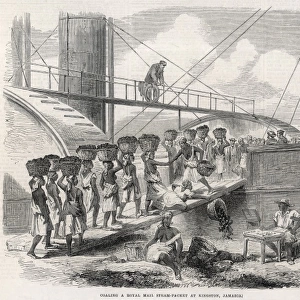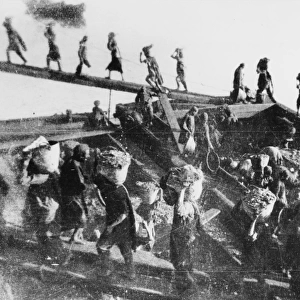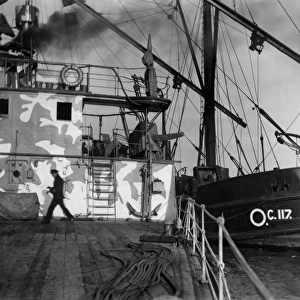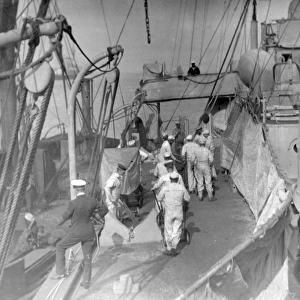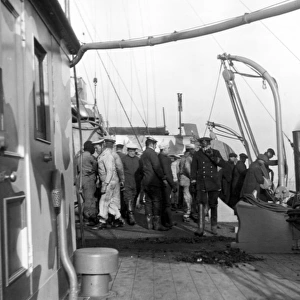Home > Transportation > Ships and Boats
Oiling and Coaling on land
![]()

Wall Art and Photo Gifts from Mary Evans Picture Library
Oiling and Coaling on land
Light labour and hard labour: oiling and coaling on land. The new method and the old- a contrast. The top image shows a torpedo boat taking in oil fuel through a hose linking her with a tank in the wharf. Below shows a cruiser coaling from the coal depot at Portsmouth, a much dirtier and more laborious task. Date: 1910
Mary Evans Picture Library makes available wonderful images created for people to enjoy over the centuries
Media ID 7188561
© Mary Evans Picture Library 2015 - https://copyrighthub.org/s0/hub1/creation/maryevans/MaryEvansPictureID/10528177
Coal Coaling Cruiser Depot Fuel Hose Linking Method Oiling Portsmouth Supplies Supply Taking Tank Torpedo Wharf
EDITORS COMMENTS
1. Title: A Century of Maritime Supplies: Oiling and Coaling on Land - A Contrast 2.. This image from the early 20th century showcases the stark contrast between the new method of oiling and the traditional coaling process on land. In the top image, a torpedo boat is seen taking in oil fuel through a hose that connects it to a tank on the wharf. This innovative method, introduced in the late 19th or early 20th century, revolutionized the way ships were supplied with fuel while at port. In contrast, the bottom image depicts a cruiser coaling from the coal depot at Portsmouth. Coal was the primary fuel source for ships during this era, and the coaling process was a labor-intensive and messy task. Coal was transported from the depot to the ship using boats and cranes, and the coal was then shoveled into the ship's bunkers by hand. The introduction of oil fuel and the oiling method marked a significant shift in maritime technology and logistics. Oil fuel was cleaner, more efficient, and easier to transport and handle than coal. The oiling method allowed ships to be supplied with fuel more quickly and with less labor, making port calls more efficient and reducing the time ships spent in port. This photograph, taken in 1910, offers a fascinating glimpse into the maritime supplies of the past and the evolution of technology that transformed the way ships were fueled and supplied on land.
MADE IN THE USA
Safe Shipping with 30 Day Money Back Guarantee
FREE PERSONALISATION*
We are proud to offer a range of customisation features including Personalised Captions, Color Filters and Picture Zoom Tools
FREE COLORIZATION SERVICE
You can choose advanced AI Colorization for this picture at no extra charge!
SECURE PAYMENTS
We happily accept a wide range of payment options so you can pay for the things you need in the way that is most convenient for you
* Options may vary by product and licensing agreement. Zoomed Pictures can be adjusted in the Cart.


